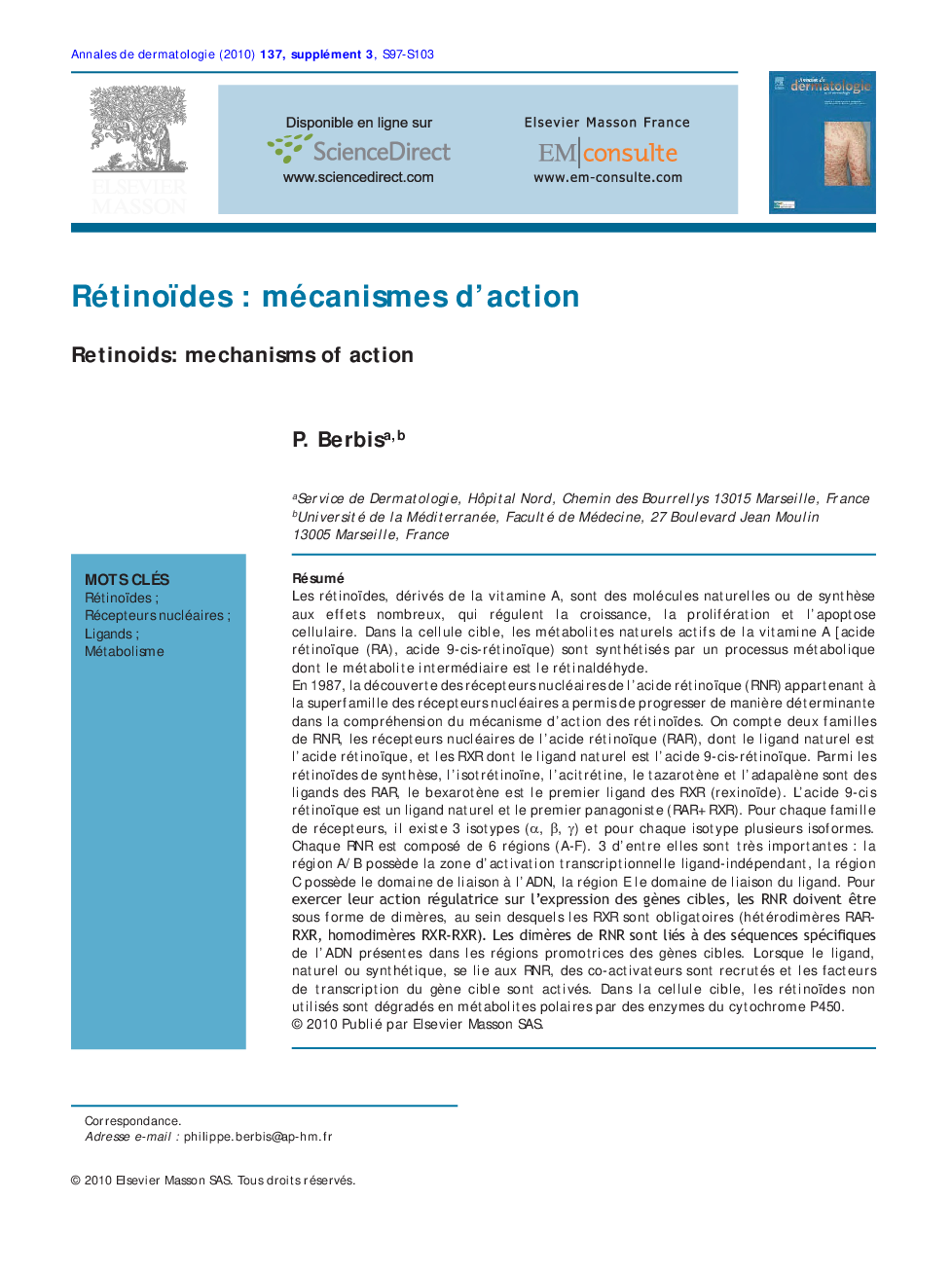| Article ID | Journal | Published Year | Pages | File Type |
|---|---|---|---|---|
| 3188264 | Annales de Dermatologie et de Vénéréologie | 2010 | 7 Pages |
Abstract
In 1987, the identification of the nuclear retinoic acid receptors that belong to the superfamily of nuclear receptors led to a significant progress in the comprehension of the mechanism of action of retinoids. There are two families of Retinoid Nuclear Receptors (RNR), the RA receptors (RAR), which natural ligand is RA, and the Retinoid X Receptors (RXR), which natural ligand is 9-cis-retinoic acid. Among synthetic retinoids, isotretinoin, acitretin, tazarotene and adapalene are ligands of the RAR, bexarotene is the first rexinoid (ligand of the RXR), alitretinoin the first panagonist (RAR+ RXR). For each family, there are 3 isotypes (α, β, γ), and for each isotype several isoforms. Each NRR is composed of 6 regions (A-F). 3 regions are of importance : the A/B region has a ligand-independent transcriptional activation function, the C region harbors the DNA binding domain, the E region harbors the ligand binding domain. To regulate the expression of target genes, NRR have to dimerize. RXR are obligatory in dimers (heterodimers RAR-RXR, homodimers RXR-RXR). Dimers binds specific sequences of DNA, present in the promoters of target genes. When the ligand, natural or synthetic, bind to RNR, coactivators are recruited and transcription factors are activated. In target cell, retinoids not utilized are degradated in polar metabolites by enzymes of cytochrome P450.
Related Topics
Health Sciences
Medicine and Dentistry
Dermatology
Authors
P. Berbis,
